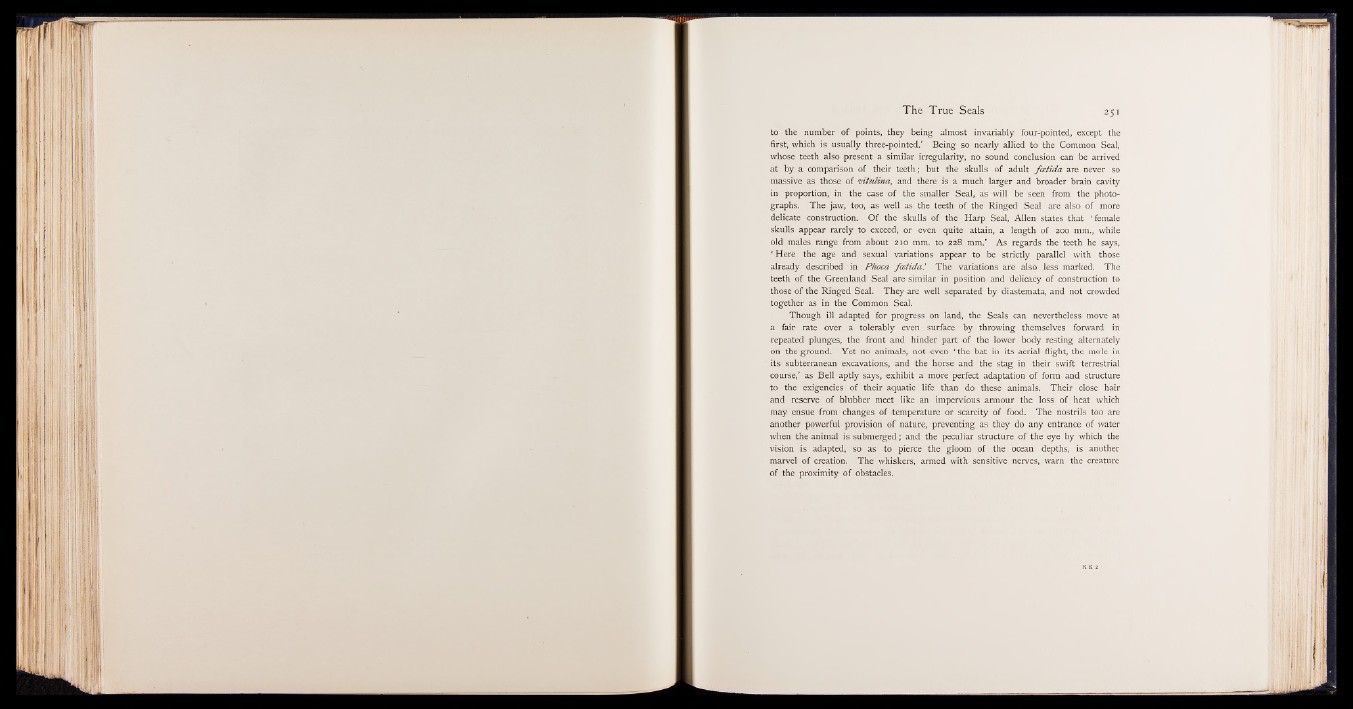
to the number of points, they being almost invariably four-pointed, except the
first, which is usually three-pointed.’ Being so nearly allied to the Common Seal,
whose teeth also present a similar irregularity, no sound conclusion can be arrived
at by a comparison of their teeth; but the skulls of adult foztida are never so
massive as those of vitulina, and there is a much larger and broader brain cavity
in proportion, in the case of the smaller Seal, as will be seen from the photographs.
The jaw, too, as well as the teeth of the Ringed Seal are also of more
delicate construction. Of the skulls of the Harp Seal, Allen states that ‘ female
skulls appear rarely to exceed, or even quite attain, a length of 200 mm., while
old males range from about 210 mm. to 228 mm.’ As regards the teeth he says,
‘ Here the age and sexual variations appear to be strictly parallel with those
already described in Phoca fa tid a .’ The variations are also less marked. The
teeth of the Greenland Seal are similar in position and delicacy of construction to
those of the Ringed Seal. They are well separated by diastemata, and not crowded
together as in the Common Seal.
Though ill adapted for progress on land, the Seals can nevertheless move at
a fair rate over a tolerably even surface by throwing themselves forward in
repeated plunges, the front and hinder part of the lower body , resting alternately
on the ground. Yet no animals, not even ‘ the bat in its aerial flight, the mole in
its subterranean excavations, and the horse and the stag in their swift terrestrial
course,’ as Bell aptly says, exhibit a more perfect adaptation of form and structure
to the exigencies of their aquatic life than do these animals. Their close hair
and reserve of blubber meet like an impervious armour the loss of heat which
may ensue from changes of temperature or scarcity of food. The nostrils too are
another powerful provision of nature, preventing as they do any entrance of water
when the animal is submerged; and the peculiar structure of the eye by which the
vision is adapted, so as to pierce the gloom of the ocean depths, is another
marvel of creation. The whiskers, armed with sensitive nerves, warn the creature
of the proximity of obstacles.